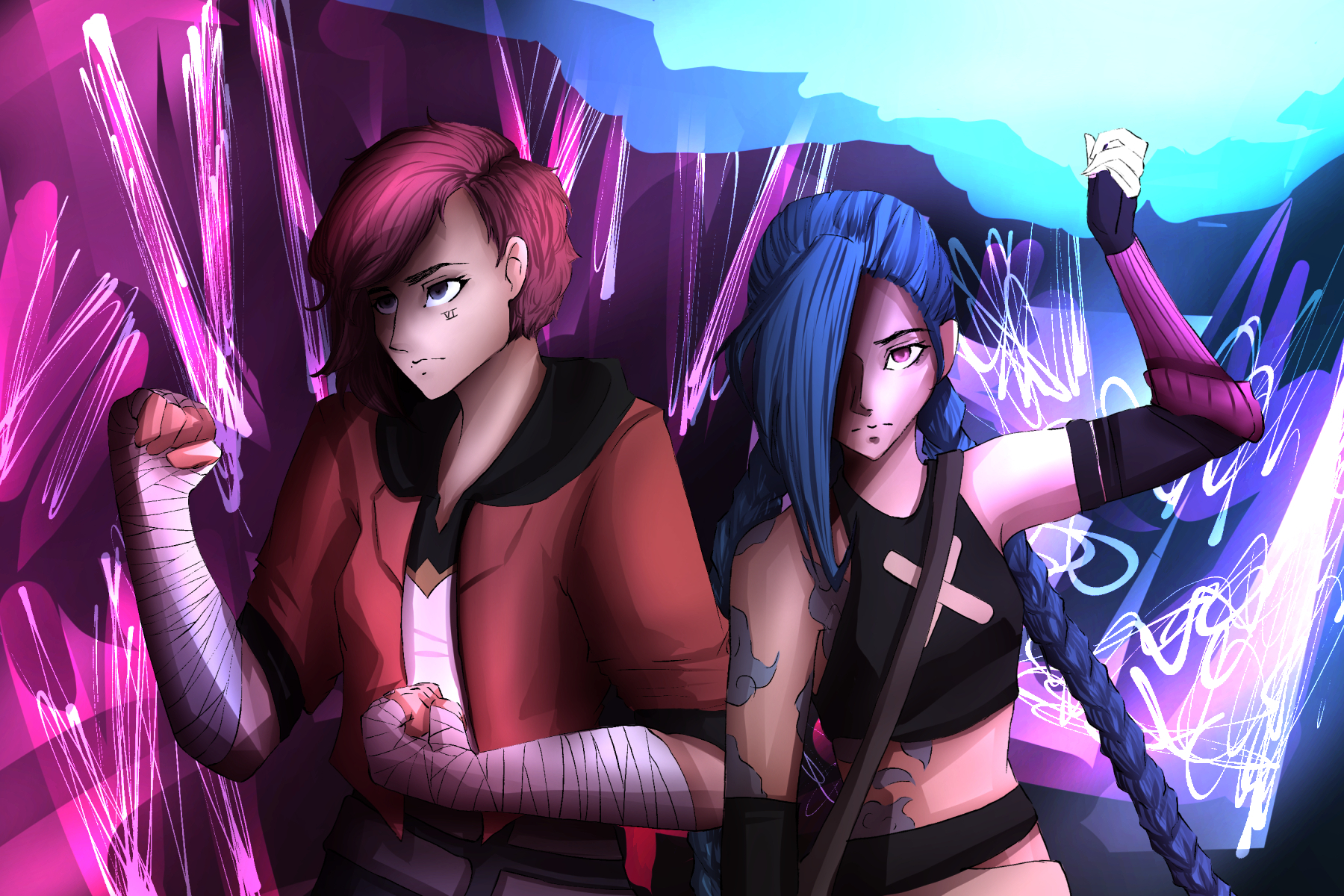Based on the wildly popular video game “League of Legends,” “Arcane” has become one of Netflix’s most well-received shows of 2021, if not of all time. With a 97 % approval rate on Google reviews and a perfect 100 percent approval rate on Rotten Tomatoes, it is clear that “Arcane” has successfully appealed to a wide audience. By presenting engaging lore in the show, “Arcane” has bridged the gap between gamers and non-gamers, uniting both demographics. This has proven that video game-based stories can be enjoyed by a larger audience beyond their niche demographic.
Despite only having nine episodes, which were released two at a time every three weeks, the show manages to pack in a lot of action and drama. While the show did not achieve the viewership it could have potentially garnered due to its niche appeal, there are many aspects of “Arcane” that make it a true hidden gem in the TV show genre.
Visual Rendering in ‘Arcane’
The visuals in “Arcane” are a major draw for viewers, even those who are unfamiliar with “League of Legends.” The high-quality rendering is impressive, thanks to the work of the private animation studio Fortiche, based in Paris, France.
One standout moment that showcases the complexity and precision of the animation is the fight between Jinx and her childhood friend, Ekko. The rapid changes in color, lighting and animation style not only demonstrate the animation team’s skills but also add emotional depth to the fight. The high-contrast lighting increases the tension of the scene, while the stop-motion pacing in the middle allows the audience to savor each moment of the action.
As Jinx and Ekko charge toward each other, they intermittently transform between their adult and childhood selves. This serves to remind the audience of their past friendship while acknowledging their present animosity. This scene is a perfect example of how the stunning visuals in “Arcane” contribute to the show’s overall excellence.
Creating Conflict
The show’s overarching aesthetic is cyberpunk-based, and it plays a crucial role in building the show’s setting. There are two main sub-settings: the upper-class city of Piltover and the lower-class underground realm of Zaun.
Despite being interconnected and holding a peace agreement at the start of the show, Piltover and Zaun are socially and culturally distinct. Residents of Piltover prioritize scientific and educational advancements, particularly in the field of hextech technology, while Zaun experiences high crime rates, poverty and violence. The residents of the two cities harbor a mutual hatred, and the tension between them only grows as the show progresses.
The main characters, sisters Vi and Powder, hail from Zaun, and as the show unfolds, they become increasingly entangled in the conflict between the two cities. This stark contrast in culture and society between Piltover and Zaun adds depth and complexity to the show’s cyberpunk-inspired setting.
Characterization of Women
The characterization of women in the show is one of its greatest strengths. The female protagonists and antagonists are thoughtfully crafted in a way that shatters the image of the quintessential female action character.
In most action films, the female protagonist has an overwhelming advantage over the other characters in the story, such as the superheroes in Marvel or DC comics. Often, her strength is derived from a power source or happened upon rather than being earned. This reduces the protagonist to one who is “strong” by luck or chance rather than through her experiences. Despite attempts to create “strong” characters in these movies, it is not convincing. The audience is numb to elation for the female protagonist when she does triumph because she always triumphs in these cases. She is “strong” to fulfill a quota rather than to catalyze her character’s development.
“Arcane” subverts this with its female characters. Vi is neither a pushover nor immensely advantaged over other characters; she realizes her own power early in the story during a conflict involving her, Jinx, and a couple of their childhood friends against bullies in Piltover. She gets beaten up and busted quite a few times, making her triumphs more believable and exciting. Her successes are coupled with defeats, and her triumphs do not follow a linear path.
Jinx’s character is influenced by neo-noir film elements, a genre that emerged post-World War II and rose in popularity from the 1960s through the 70s, which modernized classic film noir tropes and visuals.
Tropes
Neo-noir tropes often include an “antihero” or a contemptuous protagonist, typically a detective character. There is also an enigmatic “femme fatale” who gets the protagonist to fall in love with her and then deceives the protagonist in some way. In addition, there is a “conspiratorial” plot or one that revolves around the protagonist exploring a network of corruption and exposing it.
“Arcane” largely mirrors these tropes with its own twist. The “antihero” is one of the main characters in the story. She was originally named Powder, but endures a tragic event that leads to the emergence of her new persona, Jinx.
Interestingly enough, Jinx can also be considered the “femme fatale.” Instead of explicitly seducing someone, however, she uses her relationship with Vi as well as other protagonists to take advantage of them. She often puts on an innocent act in front of them, which allows them to lower their guard. She utilizes these moments of weakness to overpower them. This juxtaposition of characterization can oftentimes become murky, but for Jinx’s character, it works well.
One of the main antagonists, Silco, is behind the “conspiratorial” plotline in the show. His ultimate goal is to completely separate Piltover and Zaun, and he recruits Jinx to help him accomplish this. Despite being an antagonist, the show cleverly designs his character in a dynamic way. The audience sympathizes with him during his moments of kindness toward Jinx when revealing his backstory.
Musical Storytelling
The soundtrack of the show features prominent artists such as Imagine Dragons, Denzel Curry and Bren Joy. It is diverse and filled with songs that span different emotional scenes throughout the story.
Energy-charged songs like “Enemy” by Imagine Dragons play during the climactic points in the story and “Enemy” is also the theme song for the opening credits of each episode. Another notable song is “Dynasties and Dystopia,” featuring Denzel Curry, Gizzle and Bren Joy, which plays during Jinx and Ekko’s fight scene.
Grittier songs set the tone for action scenes that take place in Zaun as well as in Silco’s lair. “Snakes” by PVRIS featuring MIYAVI runs in the background as Vi and Jace battle Silco’s henchmen.
















